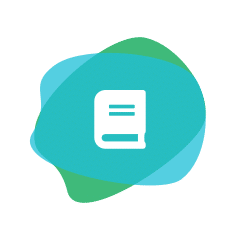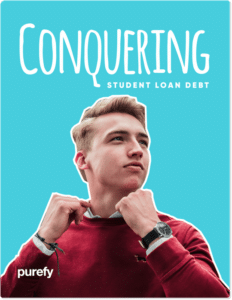What do you want to do?
Refinance My Student Loans
Get a Private Student Loan
Get a Personal Loan
Log In

Student loan debt is one of the biggest issues facing Americans today. 69% of undergraduates leave school with student debt, carrying an average balance of $29,650 — numbers that have been getting bigger and bigger, with little sign of slowing down.
On the individual level, this kind of debt can severely burden a college graduate’s ability to pursue their dreams. The good news is that by educating yourself on your student loan options and tried-and-true personal finance strategies, you can make the best of a tough situation.
Financial freedom is possible — it just takes commitment and a good plan. That’s where Purefy can help.




Purefy is proud to offer Conquering Student Loan Debt, a comprehensive 13-page eBook for navigating student loan debt and achieving financial freedom. In this guide, you will learn:

Refinancing student loans with a private lender has become a popular repayment strategy. As with consolidation, the loans you refinance will become one new loan. The benefit of refinancing is that you get a new (and potentially lower) interest rate based on your credit. You can refinance to a shorter term to save the most money and get out of debt faster, or you should choose a longer term to keep your monthly payment more manageable. Keep in mind that if you refinance federal loans, you’ll give up your federal benefits like access to income-driven plans and loan forgiveness programs. In general, if you can lower your interest rate, refinancing may be worth considering.
The best repayment option will vary depending on your situation and goals. In general, sticking with the Standard Repayment plan for federal loans will save you money over choosing a plan that reduces your monthly payment, like Extended Repayment or an income-driven repayment plan. If you can afford to, paying off your loans as soon as possible my making additional prepayments will save the most money.
The standard repayment plan for federal loans and most private loans is ten years. You can speed up your repayment by making additional prepayments or even refinancing your student loans. You can slow down your repayment (and lower your monthly payment) by choosing an alternative repayment plan, or even refinancing to a longer term.
Student loan consolidation usually refers to the federal Direct Consolidation Loan, which lets you combine multiple federal student loans into one. This can be a great way to simplify your payments. Your interest rate will be based on the weighted average of the loans you are consolidating, rounded up to the nearest 1/8 of a percent. You also have the option to extend your repayment term up to 30 years.
If you have federal student loans, and you enter into an income-driven repayment plan, it is in fact possible to have your loans forgiven in 20 or 25 years. This may be a good option if your income is low compared to your debt load. But keep in mind, the amount that is forgiven under these plans may be taxed, leaving you with a large one-time bill at the end of your repayment. Unfortunately, if you have private student loans, forgiveness is likely not an option.
In order to qualify for Public Service Loan Forgiveness (PSLF), you must work full-time for a government agency or certain nonprofit organizations, you must have federal direct loans, and you must make 120 qualifying monthly payments through an income-driven plan. If you meet all the criteria, you can apply to have your federal loans forgiven (tax-free) after 10 years.
If you miss a payment, your student loans will become delinquent until you make them current by making up your missed payments. Even after you pay them back, the missed payments will generally show on your credit report and will likely hurt your credit score. If you don’t pay your student loans for 270 days, you will enter default. If you’re having trouble making your payments, you might get some relief by enrolling in an income-driven repayment plan or applying for deferment or forbearance while you get back on your feet.